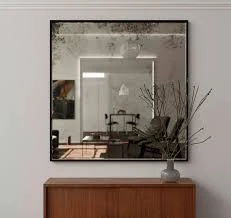

The Importance of Mirror Glass Adhesive in Modern Applications
Mirror glass adhesive is a specialized bonding agent designed for securing mirrors to various surfaces, ensuring durability and longevity. With the escalating demand for mirrors in both residential and commercial sectors, understanding the significance of high-quality adhesive becomes essential. This article delves into the types of mirror glass adhesives, their applications, and some best practices to ensure a successful installation.
Types of Mirror Glass Adhesives
There are several types of adhesives available in the market, each designed for specific applications and surfaces. The most common types include
1. Silicone Adhesives Silicone-based adhesives are known for their flexibility and resistance to moisture. They are ideal for environments exposed to varying temperatures and humidity levels, such as bathrooms and kitchens. Moreover, they provide excellent adhesion to glass surfaces, making them suitable for mirror installation.
2. Polyurethane Adhesives These adhesives offer a strong bond and are weather-resistant, making them suitable for outdoor applications. Polyurethane adhesives are also versatile and can adhere to a wide range of surfaces, including wood, metal, and plastic. This is particularly beneficial when mirrors are placed in unpredictable environments.
3. Double-Sided Foam Tapes Although not traditional adhesives, double-sided foam tapes are commonly used for lightweight mirror installations. They provide a quick and easy solution and are perfect for applications where drilling into walls is not possible or desirable.
4. Epoxy Resins Known for their strength and durability, epoxy adhesives can create an incredibly strong bond. They are suitable for applications requiring high shear strength, making them ideal for commercial installations where mirrors may be subject to stress and strain.
Applications of Mirror Glass Adhesive
The applications of mirror glass adhesive extend beyond mere mirror installations. Here are some common scenarios where these adhesives play a vital role
1. Residential Settings In homes, mirrors are widely used in bathrooms, living rooms, and entryways. The right adhesive ensures that mirrors remain securely attached, reducing the risk of accidents and promoting safety.

2. Commercial Spaces Retail stores, hotels, and offices often employ large mirrors for aesthetic and functional purposes. The adhesive used in these settings must be robust enough to handle both the weight of the mirrors and the conditions of high foot traffic.
3. Automotive Applications Mirror adhesives are also used in automotive industries to secure rear-view mirrors and side mirrors. The adhesives must adhere well under various conditions, including exposure to heat and vibrations.
4. Architectural Designs In modern architecture, mirrors are frequently used to create the illusion of space and enhance lighting. The choice of adhesive is crucial to maintain the structural integrity of the designs while achieving the desired aesthetic effect.
Best Practices for Using Mirror Glass Adhesive
To achieve the best results when using mirror glass adhesive, consider the following best practices
1. Surface Preparation Ensure that the surfaces to which the mirror will be adhered are clean, dry, and free from dust or grease. Proper surface preparation enhances the adhesive's performance.
2. Follow Manufacturer Instructions Always adhere to the manufacturer's guidelines regarding application techniques and curing times. Different adhesives have different requirements, and following these guidelines will minimize the risk of failures.
3. Temperature Considerations Be mindful of the temperature when applying the adhesive. Most adhesives work best within a specific temperature range. Applying adhesive in extreme conditions can lead to subpar bonding results.
4. Weight Distribution For larger mirrors, it is advisable to use additional support until the adhesive cures completely. This can help prevent sagging or shifting that could compromise the integrity of the installation.
5. Testing and Maintenance Conduct regular checks on the mirrors, especially in high-traffic areas. Early detection of any adhesive failure can prevent further damage and ensure a long-lasting installation.
In conclusion, selecting the right mirror glass adhesive is fundamental in ensuring the performance and safety of mirror installations. With various types available to cater to different applications, understanding their properties will allow for more effective utilization. By adhering to best practices, you can ensure that mirrors are securely mounted and maintain their aesthetic appeal over time.